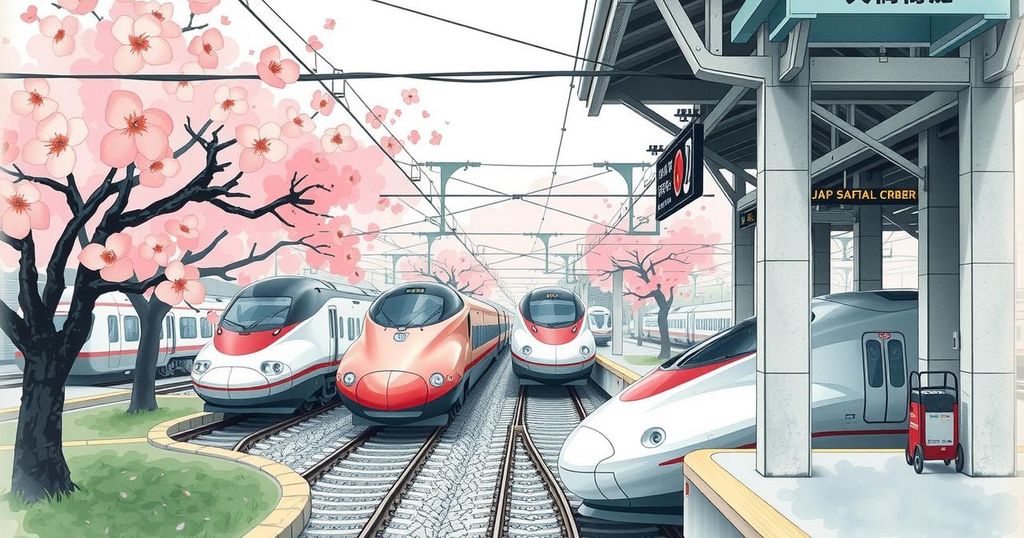Japan’s Departure Melodies: A Cultural Shift in Train Travel Soundscape

JR East is phasing out unique station departure melodies on the Nambu Line due to an operational shift to one-man train operations. This change may result in uniform melodies for various stops, affecting the local cultural identity associated with each station. Other lines like the Yokohama Line and Yamanote Line may also face similar changes in the future, signaling a broader impact on Japan’s train travel experience.
Japan’s rail network is notable for its pleasant atmosphere, which is partly due to the unique departure melodies that play at various stations. Each station often features its own signature tune, reflecting aspects of local culture or celebrating notable residents. For example, Noborito Station on the Nambu Line plays instrumental pieces from the beloved anime “Doraemon,” connecting its soundscape to the nearby museum dedicated to the series.
However, the East Japan Railway Company (JR East) has announced that it will eliminate these unique station melodies due to changes in operational procedures. The Nambu Line will transition to one-man operation, requiring a single driver without a conductor to manage the train services. This shift is a response to staff shortages and has unfortunate implications for the continuation of specific musical identities at each stop.
Currently, the role of pressing the button to play these melodies falls to the conductor on the platform. With the anticipated changes, it becomes impractical for the single driver to leave the cab and activate individual melodies during brief stops. Thus, a uniform tune may start playing at all stations on the Nambu Line instead of unique farewells.
The decision to standardize the melodies is indicative of broader changes affecting other lines, such as the Yokohama Line, which is slated to adopt one-man operations in Spring 2026. Even the renowned Yamanote Line, which encircles central Tokyo, is projected to follow suit by 2030. The loss of these melodies represents a significant shift in the auditory experience of train travel in Japan.
Despite these developments, there remains a potential for modernization. Since JR East first introduced these melodies in 1989, an automated system could feasibly be developed, allowing the driver to wirelessly control which melody plays at a given station. This could maintain the departmental identity while adapting to modern operational requirements. However, there are currently no plans to implement such advancements, suggesting March 14 may mark the end of unique melodies on the Nambu Line for the foreseeable future.
In summary, Japan’s train travel, marked by its distinctive station melodies, faces transformation with JR East’s shift to one-man operations, eliminating unique musical identifications at various stops. The practicality of operating procedures has overshadowed the cultural significance of these melodies, impacting the auditory landscape of travel. Although potential technological solutions exist, JR East lacks current plans for modernization, leading to a bleak outlook for the preservation of this cherished soundscape.
Original Source: soranews24.com






